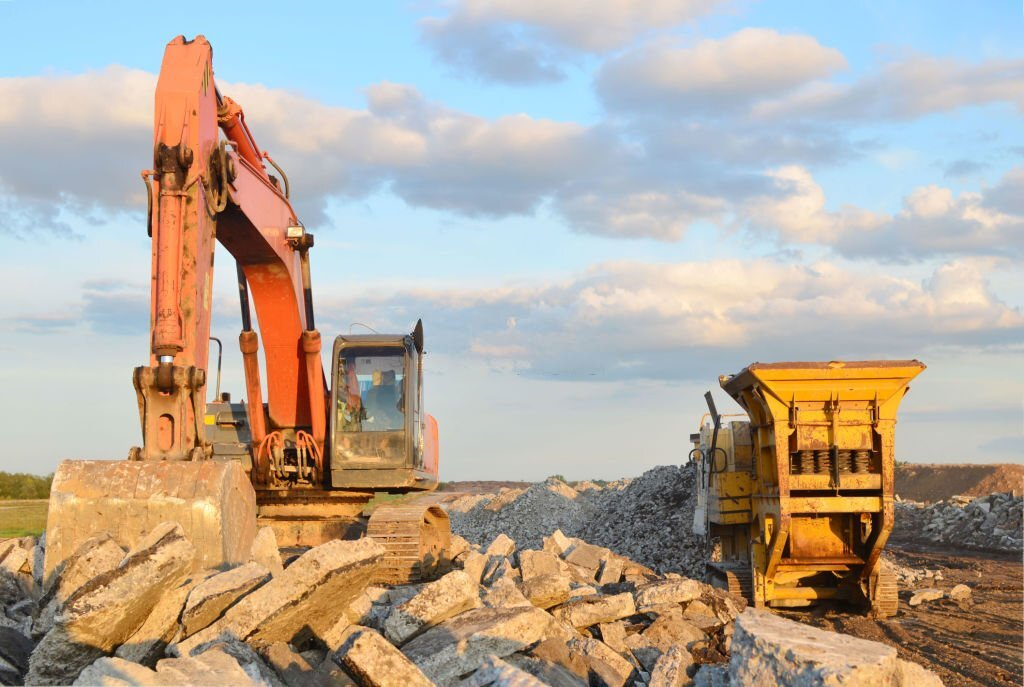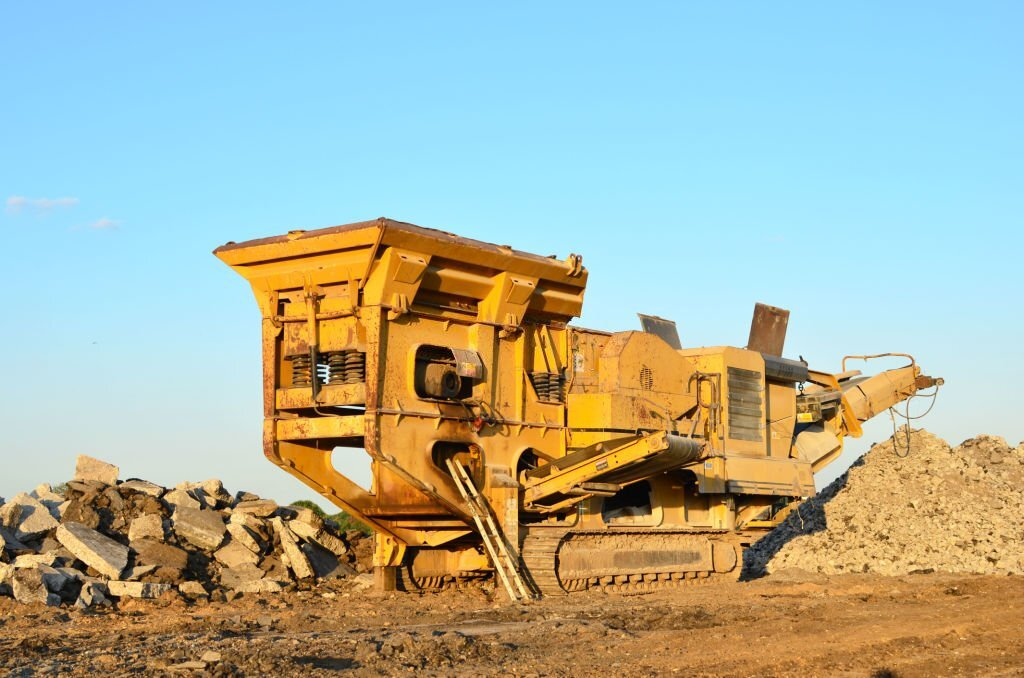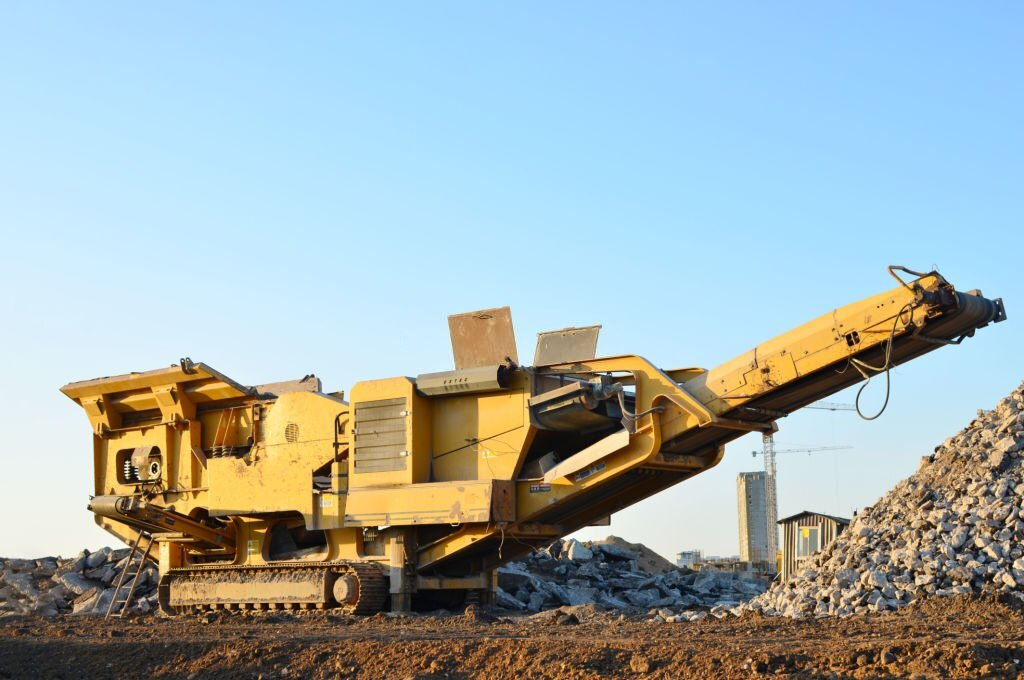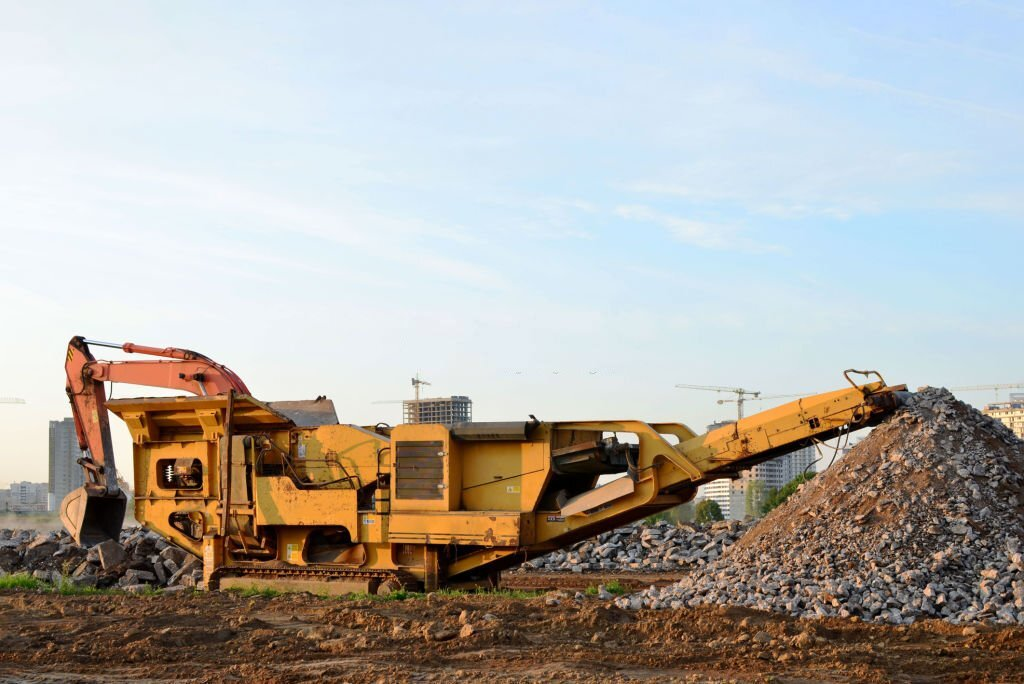
When it comes to industries like mining, construction, and recycling, the efficient and effective processing of materials is essential. This is where crushing and screening equipment shines, as it plays a pivotal role in breaking down and sorting materials for further use. In this article, we’ll delve into the various types of crushing and screening equipment, exploring their functions and applications.
Jaw Crushers:
Jaw crushers are the most common type of primary crushers and are renowned for their versatility and reliability. They use a pair of vertical jaws that compress and crush materials between them. Jaw crushers are suitable for a wide range of materials, from soft to extremely hard, making them indispensable in the mining and construction industries.
Cone Crushers:
Cone crushers operate on the principle of compression crushing, where a cone-shaped mantle squeezes material against a concave surface. These crushers are well-suited for medium to hard materials and are commonly used in the production of aggregates and the mining industry. They are also known for their efficiency in producing a well-graded end product.
Impact Crushers:
Impact crushers are designed to crush materials via impact, using hammers or blow bars. They are particularly effective for crushing softer materials, and they are commonly used in recycling applications to process concrete, asphalt, and demolition debris. Impact crushers come in various configurations, including horizontal and vertical shaft impactors.
Screens:
Screens are an integral part of the screening process, used to separate materials into different size fractions. There are several types of screens, including:
a. Vibrating Screens: These screens use vibrating mechanisms to separate materials based on size. They are versatile and commonly used in a wide range of applications, including mining, aggregates, and recycling.
b. Grizzly Screens: Grizzly screens are typically used in primary crushing applications to remove fines and improve the efficiency of the crushing process. They consist of large bars or grates that allow only smaller materials to pass through.
c. Trommel Screens: Trommel screens are cylindrical in shape and rotate to effectively sift through materials. They are often used in soil and compost processing, as well as in the mining industry.
d. Flip-Flow Screens: These screens use a unique, flexible screen mat to separate materials with high moisture content or sticky characteristics. They are ideal for processing difficult materials.
5. Conveyors:
Conveyors are an essential part of the material handling process. They transport materials from one processing stage to another, connecting various crushing and screening equipment. Belt conveyors, screw conveyors, and apron feeders are common types used in these applications.
6. Mobile Crushing and Screening Plants:
In addition to stationary equipment, mobile crushing and screening plants have gained popularity due to their portability and flexibility. These units can be transported to different job sites, making them suitable for construction and demolition projects.
Demystifying Crushing Equipment: From Jaw Crushers to Gyratory Crushers

The world of crushing equipment is a diverse and critical one, playing a pivotal role in various industries such as mining, construction, and aggregate production. From the primary crushing stage to the quaternary crushing stages, this article will guide you through the different types of crushing equipment, including jaw crushers, cone crushers, gyratory crushers, and impact crushers, shedding light on their functions and applications.
1. Jaw Crushers: The Workhorses of Primary Crushing
Jaw crushers are the go-to equipment for primary crushing in numerous industries. They feature a straightforward design with a fixed jaw and a movable jaw that compresses material against it. Jaw crushers are versatile and capable of handling a wide range of materials, from soft to extremely hard. They are commonly used in mining and construction for breaking down rock and ore into manageable sizes.
2. Cone Crushers: Precision in Crushing
Cone crushers operate on the principle of compression crushing. They have a cone-shaped mantle that gyrates within a concave bowl, effectively compressing and crushing materials. Cone crushers excel in secondary and tertiary crushing applications, producing well-graded and fine materials. These crushers are vital in industries where precise size control is essential.
3. Gyratory Crushers: Powerhouses for Heavy-Duty Crushing
Gyratory crushers are heavy-duty machines designed for primary crushing of large quantities of material. They feature a conical crushing head within a stationary chamber, making them ideal for crushing hard and abrasive materials like rock and ore. Gyratory crushers are commonly used in mining operations due to their impressive throughput capacity.
4. Impact Crushers: Shaping Materials with Precision
Impact crushers are known for their ability to create cubical-shaped end products through high-speed impact forces. They operate by striking materials with hammers or blow bars, effectively reducing their size. Impact crushers are suitable for both primary and secondary crushing and are often used in recycling applications to process concrete, asphalt, and other demolition materials.
5. Types of Crushers for Different Needs
In addition to the primary crushers mentioned above, there are several specialized types of crushers designed for specific tasks:
Secondary Crushers: These crushers come into play after primary crushers and further reduce the size of materials. They include cone crushers and impact crushers.
Quaternary Crushing Stages: In some industries, additional crushing stages are needed to achieve the desired product size. Quaternary crushers, such as vertical shaft impactors (VSI), are used for this purpose.
Crushing Chambers: Crushers can also be equipped with various types of crushing chambers, such as standard, fine, or coarse, to tailor the crushing process to specific material characteristics.
6. Rock Crushers: Masters of Material Reduction
Rock crushers encompass a wide range of crushing equipment used in the mining and construction industries. They are engineered to break down tough rock and ore into smaller, manageable sizes, facilitating subsequent processing and refinement processes.
In conclusion, crushing equipment is the backbone of many industries, enabling the extraction and processing of raw materials. From the primary crushing stage with jaw crushers and cone crushers to the heavy-duty gyratory crushers for massive rock crushing, and the precision-focused impact crushers for shaping materials, each type of equipment has its place and purpose. Understanding the nuances of these crushers and their applications is essential for optimizing the efficiency of material processing in various industries.
Rock Crushers: Crushing Hard Materials with Precision

In the world of material processing, especially when dealing with hard or abrasive materials, rock crushers emerge as the unsung heroes. These powerful crushing machines, along with screening equipment, are essential for various industries, from mining to construction. In this article, we’ll explore the different types of rock crushers and their roles in achieving the required reduction ratios and producing finer products.
1. Understanding Rock Crushers
Rock crushers are versatile machines designed to break down large rocks and hard or abrasive materials into smaller, more manageable sizes. They are categorized into various types based on their design and application. Let’s delve into some of the key types of rock crushers:
2. Primary Crushing with Impact Crushers
Impact crushers play a crucial role in the primary crushing stages. They work by striking the material with blow bars on a rapidly rotating rotor. Horizontal impact crushers are particularly effective for crushing large rocks and accepting large feed sizes. Their larger feed openings and high reduction ratios make them suitable for heavy-duty applications.
3. Secondary Crushing and Horizontal Shaft Impactors
For further size reduction, secondary crushing is often necessary. Horizontal shaft impactors (HSI) excel in this role. They are equipped with rotating mantles and strike materials with significant force. HSIs are commonly used to achieve finer product sizes after the initial crushing stage.
4. Compression Crushers for Maximum Reduction
Compression crushers, on the other hand, rely on squeezing the material between two surfaces. This type of crusher is ideal for achieving high reduction ratios and producing consistent, cubical-shaped end products. Cone crushers, part of the compression crusher family, are frequently used for secondary and tertiary crushing.
5. Continuous Feed and Conveyor Belts
In many crushing scenarios, maintaining a continuous feed of material is critical to productivity. Conveyor belts play a pivotal role in this process, ensuring a steady supply of material to the crusher. This seamless material flow allows for efficient size reduction and better control over the final product.
6. Rock Crushers in Aggregate Applications
Rock crushers find extensive use in aggregate applications, where the quality and size of the final product are of utmost importance. Achieving the desired reduction methods and precise control over the feed opening are essential in aggregate production, ensuring the product meets stringent standards.
7. Meeting Your Crushing Equipment Needs
Selecting the right type of crusher for your specific application is crucial. Consider factors such as the type of material, maximum feed size, reduction ratio requirements, and the desired final product. Each type of crusher offers unique advantages and capabilities to address your crushing equipment needs.
Smaller Rocks, Bigger Impact: Crushing Equipment for Secondary Applications

When it comes to crushing, size matters. While primary crushers tackle the big rocks, it’s the secondary crushers that shine when it comes to smaller rocks and more specialized applications. In this article, we’ll explore the world of secondary crushing equipment and how it’s well-suited for processing smaller rocks and various materials.
1. The Power of Secondary Crushing
Secondary crushing plays a pivotal role in breaking down smaller rocks and achieving specific product outcomes. These machines are essential for various industries, including mining, construction, and aggregate production. Here’s why:
2. Cubical Product for Enhanced Quality
One of the primary objectives of secondary crushing is to produce a cubical product. This means breaking down the material into well-shaped, uniform particles. Achieving a cubical product is crucial in industries such as construction and concrete production, where product consistency is paramount.
3. More Stages, More Control
Secondary crushing often involves more stages compared to primary crushing. This multi-stage approach allows for better control over the final product size and quality. It’s particularly important when dealing with smaller rocks and materials with varying characteristics.
4. Adaptable to Different Feed Sizes
Secondary crushers are designed to handle a wide range of feed sizes. Whether you’re processing smaller rocks or other materials, these machines are equipped to efficiently crush various inputs while maintaining product consistency.
5. Fines: The Secondary Advantage
Secondary crushers are excellent at producing fines. Fines are smaller-sized particles that can be used in various applications, including filling material and the production of asphalt and concrete. This versatility makes secondary crushing equipment invaluable in material processing.
6. Durability and Replacement Parts
As with any equipment, secondary crushers are subjected to wear and tear. However, they are often designed for heavy-duty use and can endure the rigors of processing smaller rocks and other materials. Additionally, readily available replacement parts make maintenance and upkeep more manageable.
7. Secondary and Tertiary Crushing
Secondary crushing equipment isn’t limited to just one stage. It can be further categorized into secondary and tertiary crushers. Tertiary crushers are particularly useful for producing even finer materials and are employed in applications requiring the highest level of product quality.
8. Closed Side Setting: Precision in Crushing
Closed side setting (CSS) refers to the gap between the crushing surfaces. It plays a critical role in controlling the product size and quality. Proper adjustment of CSS ensures that the material is crushed to the desired specifications, a crucial aspect when dealing with smaller rocks and materials.
From Primary Crusher to Secondary Stage: Impact Crushers and the Crushing Process

In the realm of material processing and crushing, primary crushers are the linchpin that sets the stage for efficient and effective material reduction. These machines are pivotal in breaking down raw materials into manageable size, paving the way for secondary crushers to take over. In this article, we will delve into the significance of primary crushers and explore their relationship with secondary crushing, with a focus on impact crushers.
The Bedrock of Crushing: Primary Crushers
A primary crusher serves as the cornerstone in the material processing journey. Its primary function is to reduce large chunks of raw material into a size that is suitable for further processing. Let’s take a closer look at the primary crushers and their roles:
Impact Crushers: A Vital Component
Impact crushers are among the primary crusher types used across various industries. They operate by utilizing the impact of rapidly rotating hammers or blow bars to crush the material. Impact crushers excel in producing cubical-shaped end products and are suitable for both primary and secondary crushing applications.
Crafting the Crushing Chamber
The design of the crushing chamber within a primary crusher significantly influences its performance. Different chamber designs are optimized for specific materials and desired end products. A well-designed crushing chamber ensures efficient reduction and consistent product quality.
Secondary Crushers: Building Upon the Foundation
While primary crushers set the initial stage, secondary crushers are responsible for taking the process further. Secondary crushers come into play after primary crushing to further reduce the material size and prepare it for subsequent processing. Impact crushers, among other types, are frequently employed in secondary crushing due to their versatility and efficiency.
Gyratory Crushers: The Heavy-Duty Primary Option
Gyratory crushers offer an alternative to impact crushers as primary crushers, especially in heavy-duty applications. They employ a conical crushing head within a stationary concave to crush the material. Gyratory crushers are renowned for their high capacity and throughput, making them indispensable in mining operations.
In conclusion
the world of crushing and screening equipment is diverse, with various types tailored to specific applications. From jaw crushers and cone crushers for primary crushing to impact crushers for recycling and a variety of screens and conveyors to sort and transport materials, each piece of equipment plays a crucial role in processing materials efficiently. Understanding these different types of equipment is essential for industries where material processing is a critical step in the production process.

